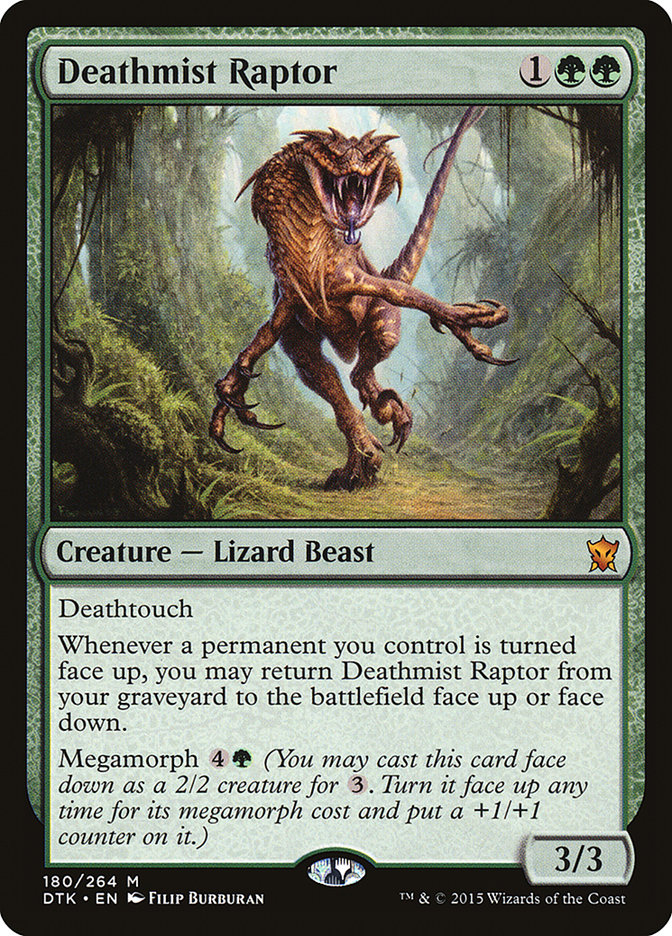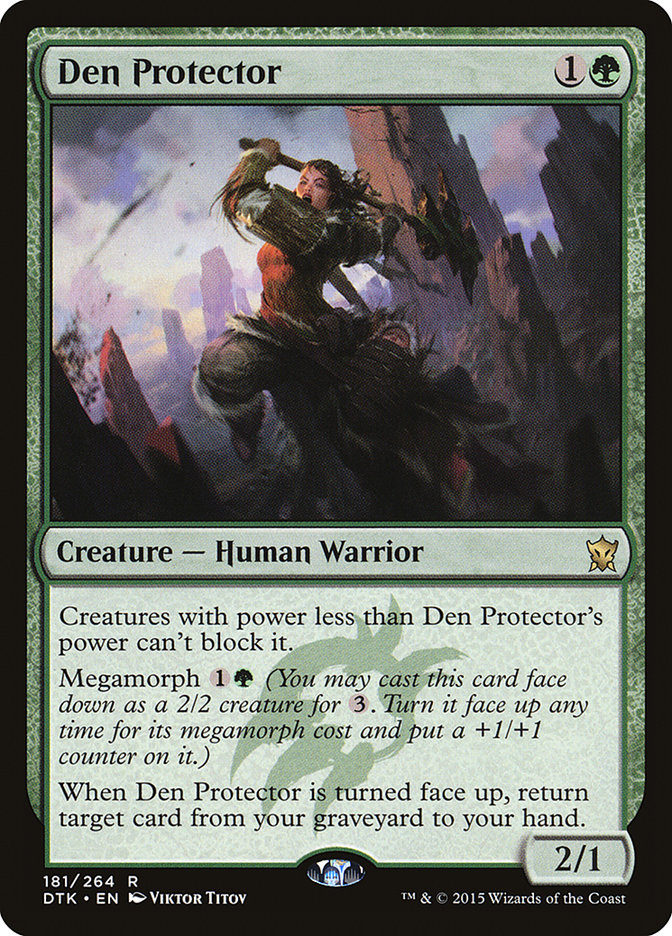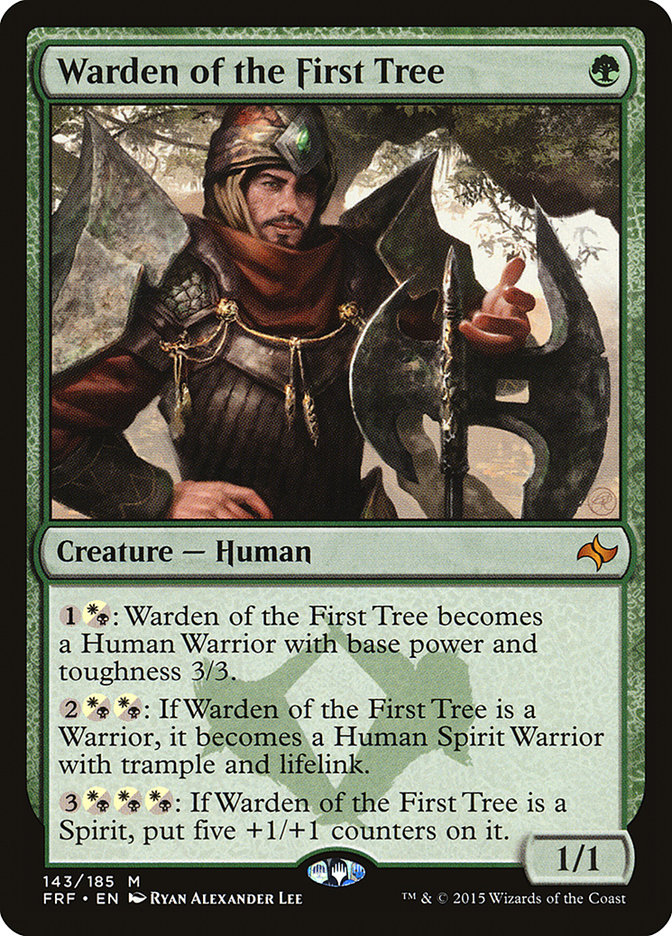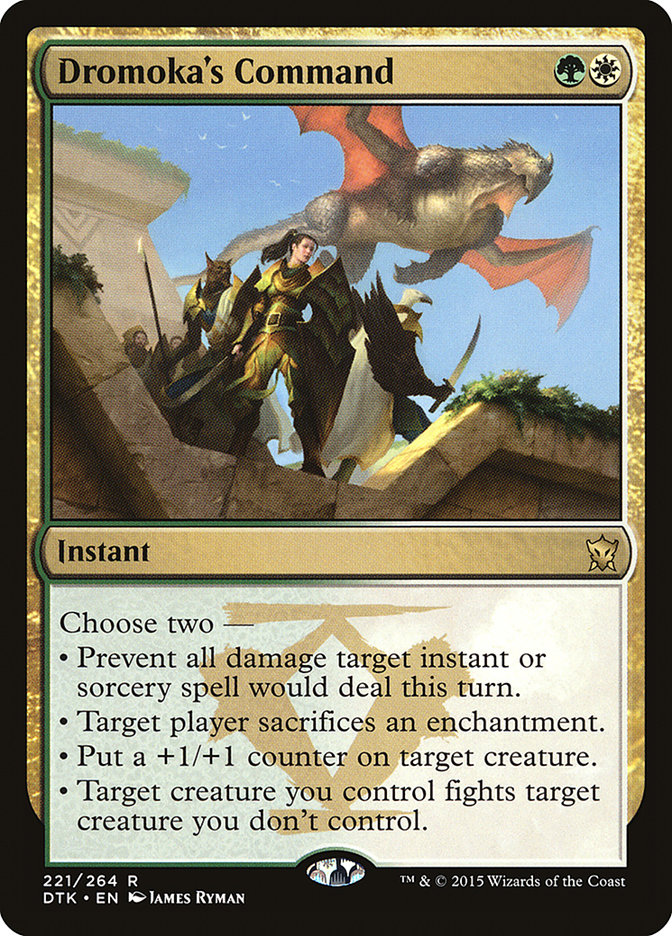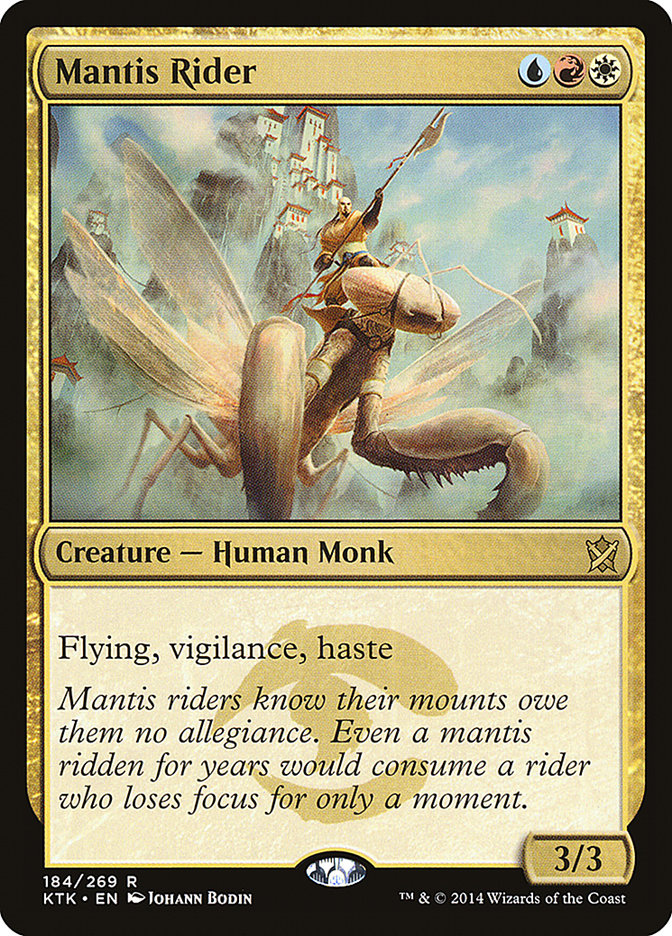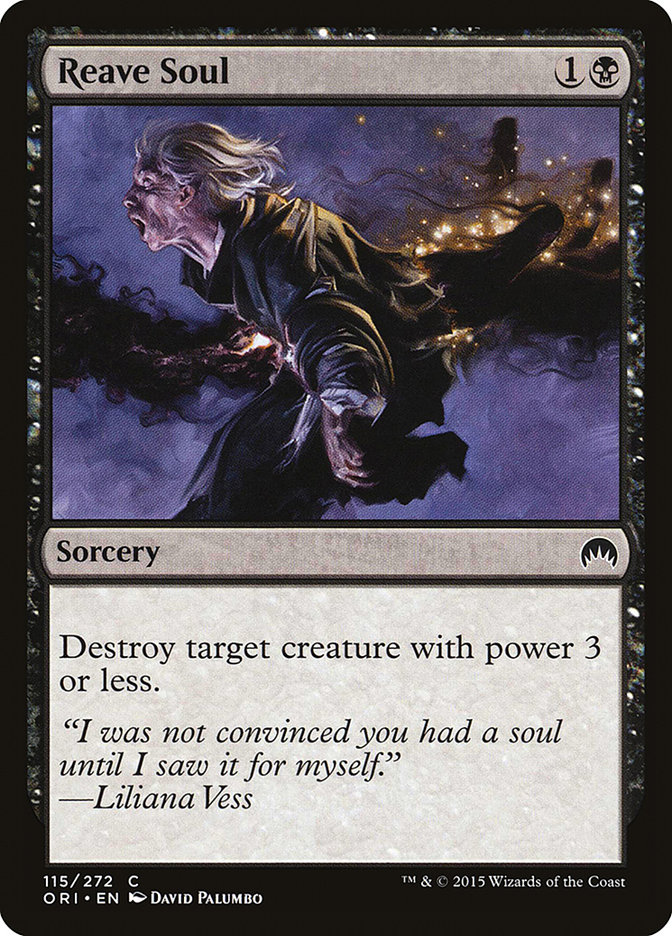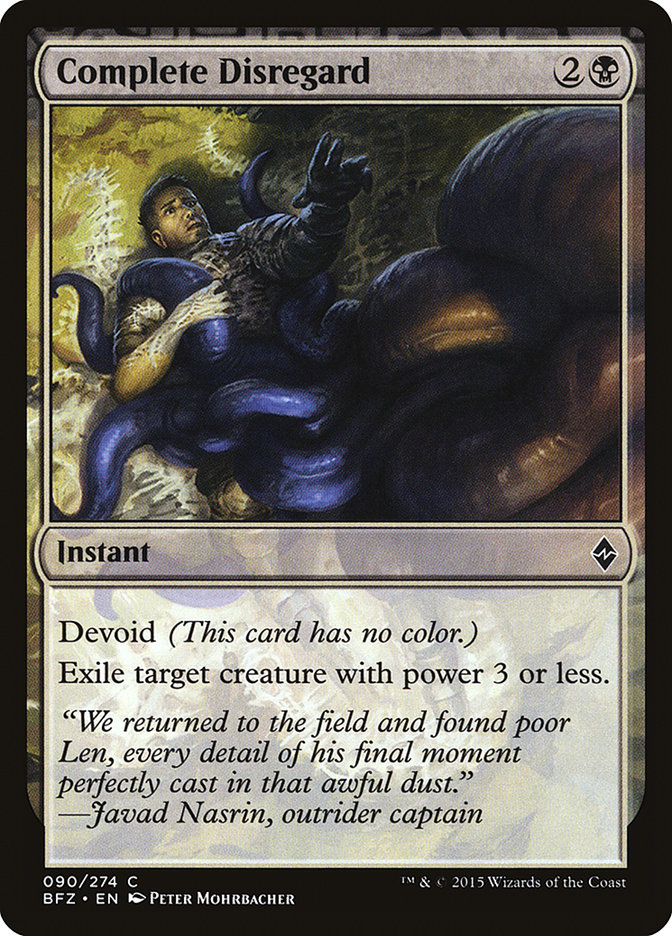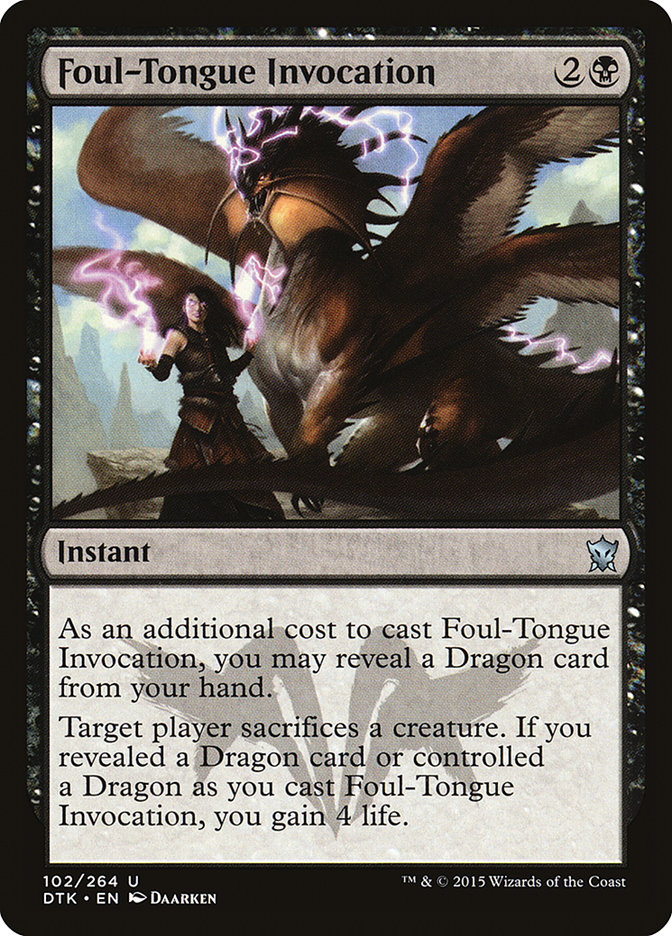The new Standard format had its debut this past weekend at #SCGINDY, and it was quite the coming out party. It had all of the classic makings of the first
tournament with a new set, from wacky big spell decks and five-color monstrosities to an aggressive red deck beating all of the brews to come out on top.
This first batch of successful decks is going to serve as the blueprint for players testing for Pro Tour Battle for Zendikar, so it’s important to
understand what makes them tick to understand where the format is headed.
Let’s look at some of the fundamentals:
Creatures (17)
- 4 Monastery Swiftspear
- 2 Lightning Berserker
- 4 Zurgo Bellstriker
- 2 Chandra, Fire of Kaladesh
- 4 Abbot of Keral Keep
- 1 Makindi Sliderunner
Lands (21)
Spells (22)
Sideboard

Creatures (24)
- 3 Wingmate Roc
- 4 Warden of the First Tree
- 2 Hidden Dragonslayer
- 4 Den Protector
- 4 Deathmist Raptor
- 3 Nissa, Vastwood Seer
- 4 Hangarback Walker
Planeswalkers (4)
Lands (25)
Spells (7)

It’s really no surprise to me that these two decks were battling it out in the finals of the first Battle for Zendikar Standard event.
Every time a new set comes out, especially one with the tools to support ultra-greedy multicolor manabases, straightforward and consistent aggressive decks
tend to be the ones that come out on top. It’s no coincidence that red beatdown decks tend to do extremely well in the early weeks of a new format, because
they’re the decks that prey on all of the untuned brews that players are trying out before they really have a handle on how the format works.
That said, Brian DeMars played a deck that is quite a bit fancier than most of the Mono-Red decks we usually see mopping up the week one brews. Not only is
his deck capable of coming out of the gates quickly with threats like Zurgo Bellstriker and Monastery Swiftspear but it can close out games almost
instantly with the combination of Become Immense and Temur Battle Rage. While many aggressive red decks may fold to sizable blockers early in the game,
DeMars’ deck can run right over them.
One point worth noting about Brian’s deck is that while it does have the ability to deal a lot of damage quickly, almost all of that damage comes from
combat. All three of Titan’s Strength, Temur Battle Rage, and Become Immense require an attacking creature in order to be effective, and only Wild Slash
and Atarka’s Command can do damage on their own. This is quite different from most Mono-Red decks, and certainly informs how one ought to play against it
and the kind of cards that are best to sideboard against it. Raw lifegain cards and cheap blockers, for instance, are significantly worse because of the
huge chunks of damage the Become Immense + Temur Battle Rage combo can deal, while removal spells like Wild Slash and Surge of Righteousness are better.
I have to imagine that dynamic came back to haunt Michael Majors in the finals. Of all of the decks in the Top 8, his was the one I liked the most, which
probably doesn’t come at all as a surprise since it’s essentially an evolution of the G/W Megamorph deck I played last Standard season. While Elvish Mystic
and Fleecemane Lion are no longer with us, the Deathmist Raptor + Den Protector core and the cheap utility spells that work so well with them remain.
Warden of the First Tree was one of the worst cards in my old G/W deck, but it’s one of the best in Michael’s list simply because of the change in how
manabases are now built. The best dual land in the old format for G/W was Temple of Plenty, which means you needed to take a turn off at some point to play
a land that entered the battlefield tapped. With Elvish Mystic, you would often do that on your third turn after ramping into a three-drop on turn 2, but
it was much more difficult to find a good off turn to play a tapped land if you dropped Warden on turn 1 and pumped it on turn 2. With so many fetchlands
and duals that enter the battlefield untapped, though, you can almost always play a Warden on turn 1 and spend the mana to pump it on turn 2 without
significantly disrupting your curve.
Warden is also a lot better due to the removal spell suite that Standard currently features. Gone are Lightning Strike, Searing Blood, and Bile Blight to
efficiently deal with three toughness creatures. Draconic Roar is still around, though without as many good Dragons to pair it with, and Ultimate Price is
similarly legal, though dangerous in a world of Siege Rhinos and Mantis Riders. Wild Slash can kill Warden before it has a chance to pump or in response to
the ability, but most of the commonly played removal in the format can’t answer a turn 2 3/3 very efficiently.
That’s what I really like about Michael’s deck – the efficiency and cleanness of it. While other decks are messing around trying to assemble their
multicolor manabases – and taking a bunch of damage from fetchlands in the process, I might add – Michael is simply deploying efficient threats every turn.
And even when the game goes late, those same threats can still have a major impact. Much like my G/W Megamorph deck from last season, Michael’s deck is
deceptively powerful in a long game thanks to cards like Warden of the First Tree and Nissa, Vastwood Seer, to say nothing of the power of the new Gideon
pumping out an endless string of threats.
One card that I feel may have lost a bit of its luster in the rotation, however, is Dromoka’s Command. In Theros block Standard, Dromoka’s Command
had any number of enchantments to prey upon in order to pick up two-for-one trades. Now, though, the card seems much less impressive, as its best case
scenario is usually a +1/+1 counter and fighting an opposing creature. Without Fleecemane Lion in the mix, Warden is the only cheap creature in the deck
that can reliably fight early on, which makes it much harder to use the spell as removal. Perhaps it’s so crucial to be able to kill an opposing Jace or
Mantis Rider immediately that it’s worth playing the full four copies of Command despite this, but I’d certainly strongly consider cutting down on them in
this mix of creatures.
Speaking of Mantis Rider and Jace – let’s take a look at the next deck that looks to be a serious Standard contender:
Creatures (15)
Planeswalkers (3)
Lands (25)
Spells (17)

Creatures (17)
- 4 Mantis Rider
- 3 Soulfire Grand Master
- 1 Tasigur, the Golden Fang
- 2 Dragonlord Ojutai
- 4 Jace, Vryn's Prodigy
- 3 Abbot of Keral Keep
Lands (24)
Spells (19)

Jeskai Black, as it’s being called, is one of only two archetypes to put two copies into the Top 8 of #SCGINDY. The lists had quite a bit of deviation in
their specific card choices, with Adam using Gideon and Hangarback Walker alongside Dig Through Time, while Clay played Abbot of Keral Keep, Soulfire Grand
Master, and Dragonlord Ojutai with Treasure Cruise. The core of their decks, however, remained the same – Jace, Mantis Rider, and Crackling Doom.
The idea behind each of these decks is to take advantage of the readily available multicolored mana in the format to play as many of the best aggro-control
cards as possible across four colors. They both look to leverage the pressure of Mantis Rider combined with the filtering and raw card advantage of Jace to
punish opponents without sufficient cheap removal to react to them in time. They back up this initial assault with cheap removal in the form of Wild Slash
and Valorous Stance, with Crackling Doom and Ojutai’s Command mopping up anything bigger.
I would not be surprised to see a deck like these show up as the most popular archetype at the Pro Tour. It has all of the tools that pro players love –
pressure, flexibility, and raw power level. Both Jace and Mantis Rider are capable of running away with the game quickly if unanswered, but the decks also
have the tools to play a long game thanks to the delve card drawing spells – Treasure Cruise and Dig Through Time.
The shift toward fetchland heavy manabases to support the new Battle lands has done a great deal to make delve cards even stronger – as if they needed the
help. Twelve fetchlands alongside an array of cheap spells and Jace, Vryn’s Prodigy looting away can fuel a Dig or Cruise extremely early in the game,
making it very difficult to compete with these kind of decks on a card economy front. And that’s to say nothing of the impact of Ojutai’s Command and its
ability to bring back Jace or even Dragonmaster Outcast at instant speed in any game that goes long.
The best way to beat them, it seems, is likely to be to pressure them more efficiently than they pressure you – certainly not an easy task, but one that
both Brian DeMars and Michael Majors proved is possible. It’s not at all unique for me to feel like I want to be attacking, but the lack of efficient
universal removal and the power level of the threats available makes trying to play control in this format particularly unappealing to me.
That said, some lunatics went and did just that, and they happened to do quite well despite (or because of) it:
Creatures (13)
- 1 Clever Impersonator
- 4 Siege Rhino
- 1 Silumgar, the Drifting Death
- 4 Jace, Vryn's Prodigy
- 2 Nissa, Vastwood Seer
- 1 Gilt-Leaf Winnower
Lands (27)
Spells (20)

Creatures (6)
Planeswalkers (1)
Lands (27)
Spells (26)

Creatures (9)
Lands (27)
Spells (24)

I’ll leave talking about Gerry’s deck to him since I certainly can’t do it
justice. It’s hilarious to me that the mana in Standard allows something like this to be possible – it almost feels like Modern. I will say, though, that
the part of his deck that I like the most is the inclusion of Reave Soul. In a world without a lot of great cheap removal spells, Reave Soul offers an
efficient way to kill both Jace and Mantis Rider, both of which are clearly going to be popular cards in the format.
For that reason, I’m a little surprised not to see more copies of Reave Soul in the two Esper Dragon decks, but it’s still week one of the format. Perhaps
that’s an evolution we’ll see as time goes on. That said, sorcery speed removal doesn’t work as well in a deck that’s trying to hold up mana for
countermagic like Silimgar’s Scorn, so perhaps Complete Disregard and Foul-Tongue Invocation are better choices here.
They play a number of different specific cards, which is unsurprising given the amount of choices available to control decks like these, but the big split
between Jeff and Patrick’s lists is whether Jace belongs in the maindeck or sideboard. My instinct is that if I were playing Esper Dragons next week, I’d
want my Jaces in my sideboard, because I expect a lot more Wild Slashes, Reave Souls, and Draconic Roars from people looking to answer cheap creatures. The
success of the Jeskai Black decks means it’s unlikely that many players are going to show up to a tournament weak to Jace in game 1, which means you’re
probably better off leveraging the virtual card advantage that comes from your almost entirely hexproof creature base. Let your opponents’ removal rot in
their hands.
That said, I’d be quite hesitant about bringing Esper Dragons to battle given the look of the other top decks in the field. Not only does it lack great
efficient removal to deal with threats like Jace and Mantis Rider, but the popularity of Crackling Doom makes Dragonlord Ojutai look a whole lot less
appealing. Ojutai is pretty much the entire reason that Esper Dragons is a deck, and the card itself just does not seem well-positioned against any of the
other decks we’ve looked at so far. It’s slow against Mono-Red and G/W Aggro, and unreliable against Jeskai Black. What’s the appeal?
I understand that Esper Dragons was one of the top performing decks of the weekend, but I’m hard pressed to see it continuing to perform as the metagame
adapts and shifts toward these other new decks. Maybe I’m missing something, but I just don’t see the appeal. Okay, sure I do – Dragons! –
but other than that, I’m not buying it.
What do you think? What decks out there have what it takes to keep up with Atarka Red, G/W Megamorph, and Jeskai Black? Was the success of Esper Dragons a
fluke, or will we see Dragonlord Ojutai’s triumphant return?

